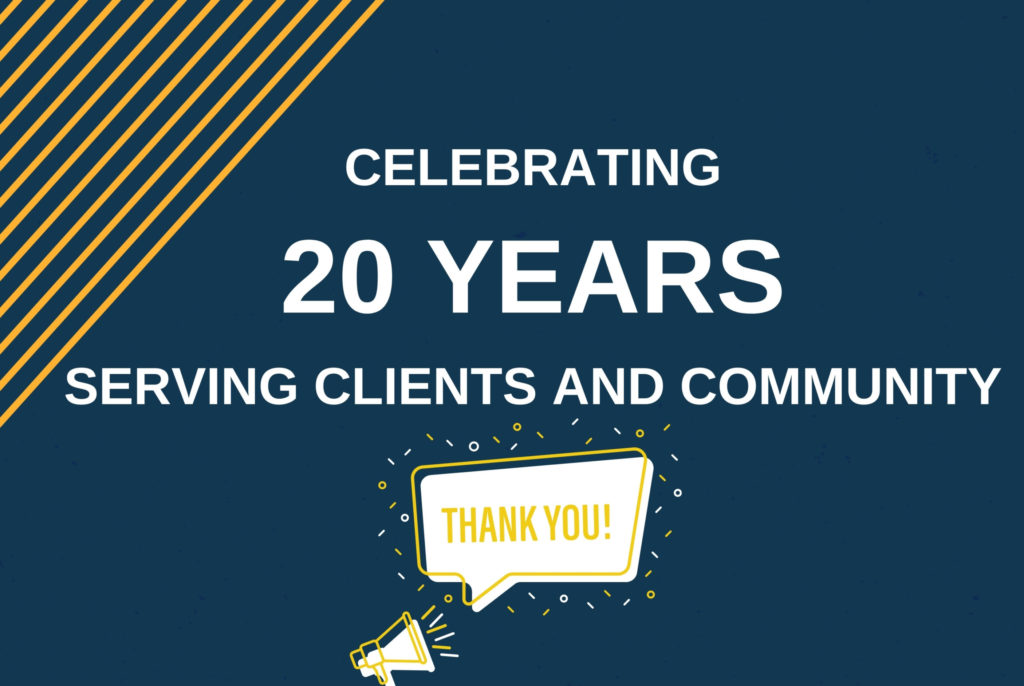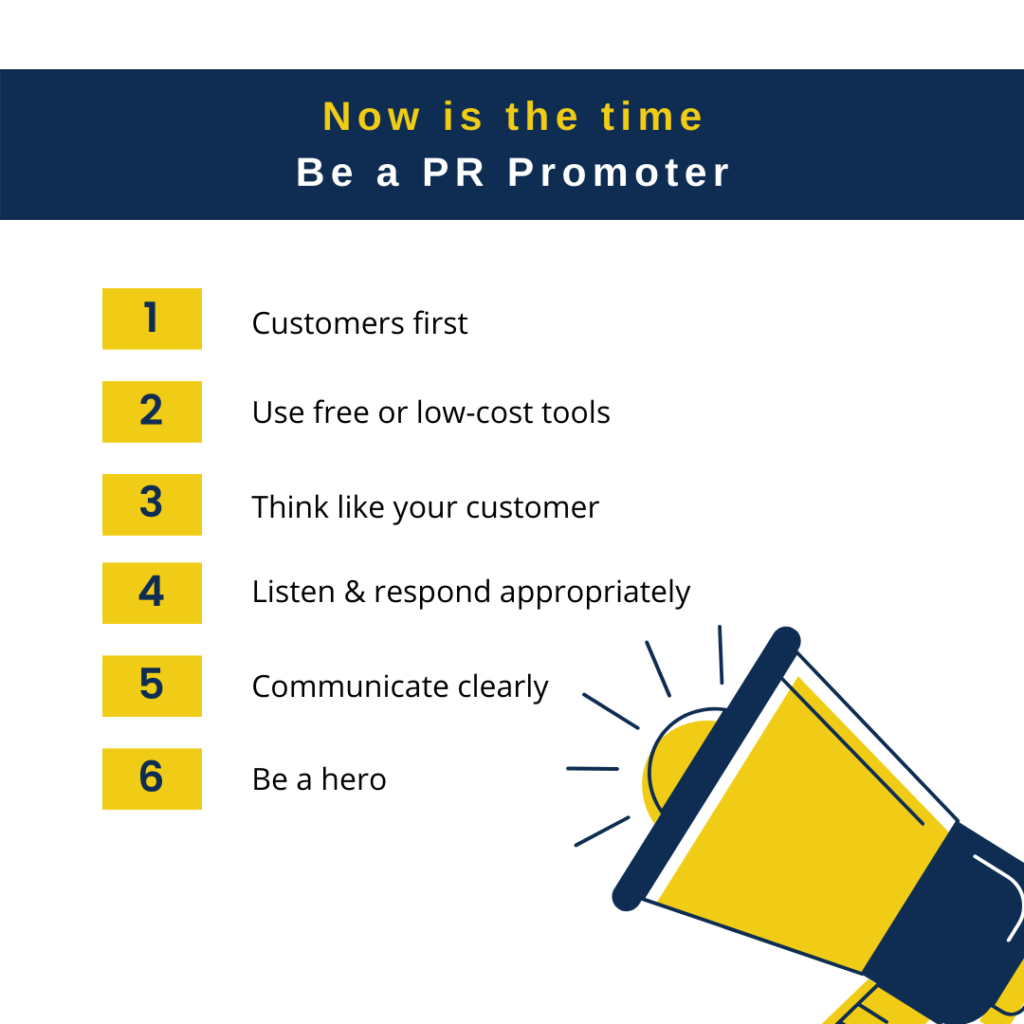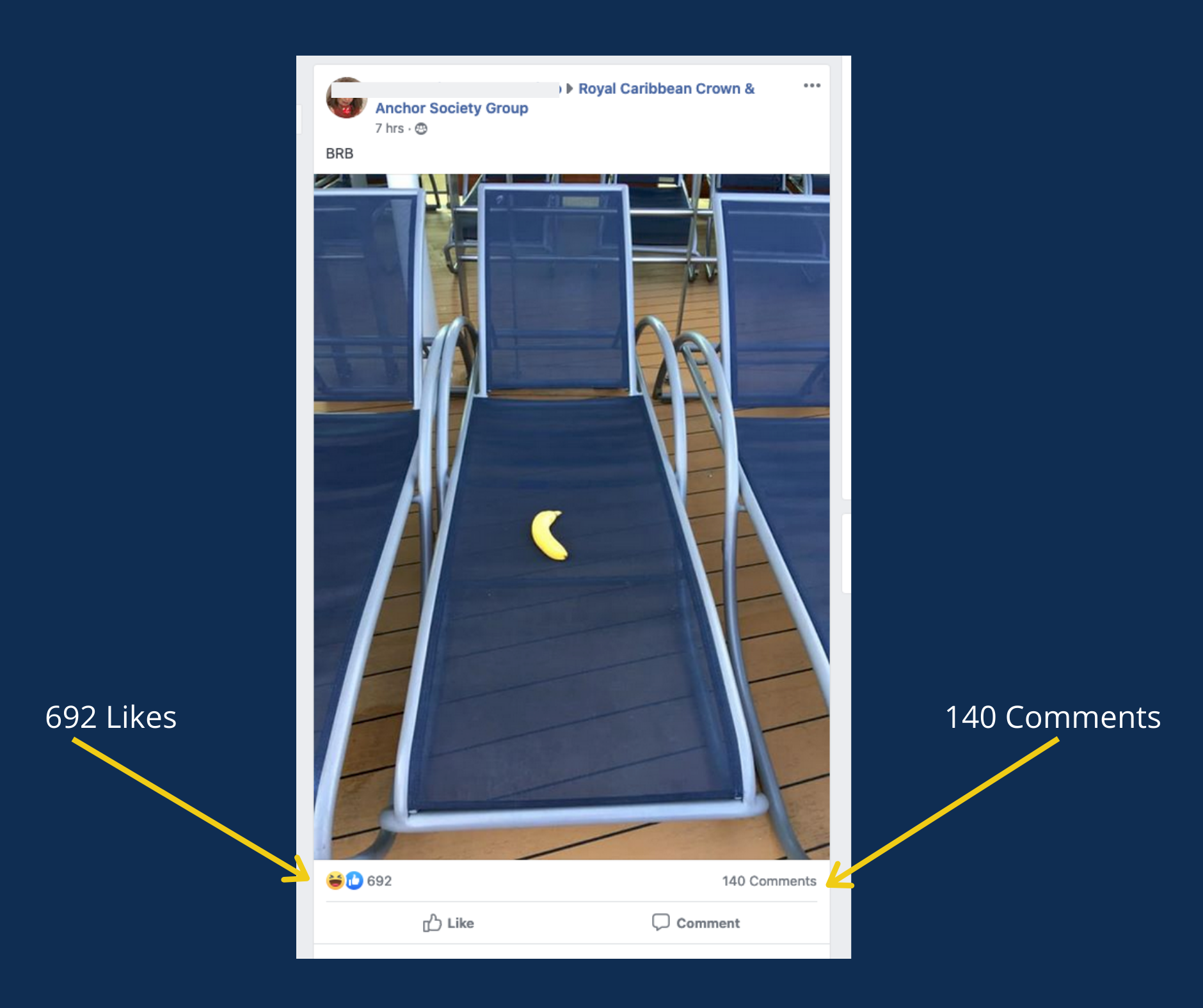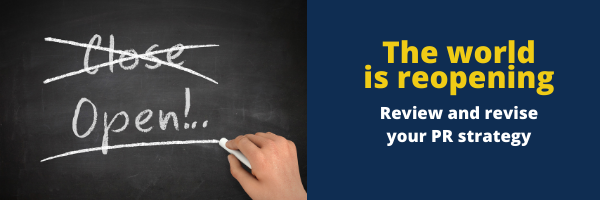 The wild COVID ride feels like it’s about over, and now it’s time to refocus (and yes, get back out there and have some fun). So now that we’re moving back toward normal in business, what (if anything) should change in your public relations strategy? We believe in keeping all things business simple and easy, so here are three quick recommendations for your next business meeting:
The wild COVID ride feels like it’s about over, and now it’s time to refocus (and yes, get back out there and have some fun). So now that we’re moving back toward normal in business, what (if anything) should change in your public relations strategy? We believe in keeping all things business simple and easy, so here are three quick recommendations for your next business meeting:
- Review your PR goals and revise them if needed. We recommend focusing on just three goals for consistency and effectiveness. These goals could focus on how to communicate when bringing back internal staff or how to refocus digital marketing efforts.
- The essentials should stay the same. Essentials are the tactics you use for communications: email, social media, website, internal communications, media relations and more. These tools are how you communicate (internal meetings with staff, intranets, websites, flyers, brochures, etc.). Tactics that are added will probably include anything that can now be done in person instead of in a virtual setting.
- Align your revised goals with tactics. This helps to ensure you’re sharing the right information in the right place. This is where the bulk of the conversation should be spent. After 2020, consumers are thinking differently. Privacy far outweighs product and price. In the last year, Apple created private browsing, we accept cookies on websites (so we know we’re being watched) and social media companies are pulling fake posts. People want information that’s true and transparent. Read on for what all of that means and how to adapt.
Challenge traditional assumptions
The 2021 Digital Consumer Trends Index gives interesting insights and feedback about how people are thinking. The study overview goes so far to suggest we use the insights to “challenge assumptions that fuel our marketing mix and the investments…”. Here’s why.
When it comes to external communications, while social media was a top tool for communications:
- 79% would prefer it if brands pulled back on advertising on Facebook and instead invested in loyalty programs to reward them for their business.
- 52% of consumers declaring ads on social media sites, generated from cookie tracking and the like, are creepy not cool.
Honesty, ethics and community rank high for consumers:
- 58% of consumers have switched brands for ethical reasons — remember to heed the rising expectations of the ethical consumer.
An EY study shows the same feedback:
- EY reports that 67% of online buyers would weigh social purpose and buy. Brands that convey affiliation towards health, environment, and community would charm the buyers.
Make it personal and appreciative
The majority of consumers want to receive personalized content and/or offers from trusted brands. Thoughtful and appreciative content is appreciated. The study asked people for feedback about how their favorite brand communicates with them:
- 83% appreciate the consistent experience
- 80% say it keeps them coming back when something new is communicated
- 76% like when they’re rewarded for loyalty
While this study surveyed consumers, the lessons learned can be applied to BtoB marketers and internal communications teams. We’re Zoomed out. People will want others to be genuine. They’ll want to do business in a personal, face to face, let’s talk to each other way. And they want to feel appreciated.
In your plan review and revision, ask yourself what and how can you communicate that’s meaningful? How will you do that? And are you rewarding people for being loyal after a long, hard year?
The 2021 Digital Consumer Trends Index, commissioned by Cheetah Digital, reveals what consumers expect from the brands they do business with online, the channels they want to connect on, and the data they’re prepared to share in return for more personalized experiences at every stage of the customer lifecycle; from acquisition through to loyalty.
It shares insight from 5,065 consumers across six countries (Australia, France, Japan, Spain, the U.K., and the U.S.) as well as by age group (18- 24, 25-39, 40-54, and 55-75) and gender to help digital strategists and decision-makers understand how these issues fit together to build more meaningful and lasting relationships between brand and buyer.

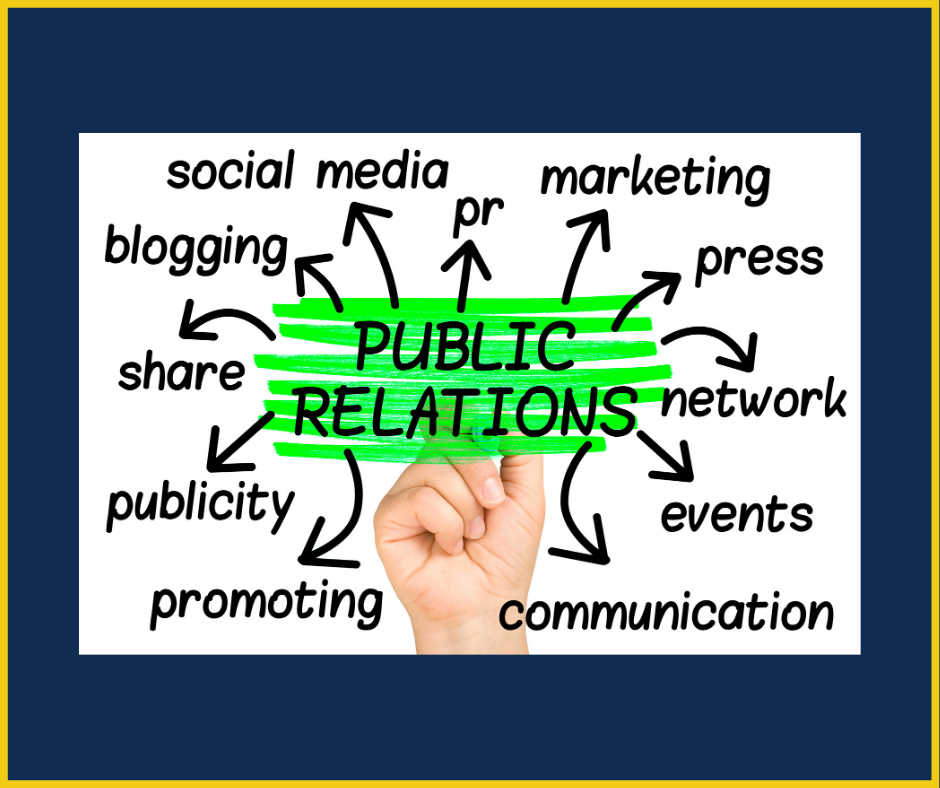 This year is certainly one we want to forget but will always remember. The New Year is certainly uncertain. Yet business continues. If you’re thinking, “How do I keep the business momentum? Or saying, “Let’s hope next year is better.” Remember this:
This year is certainly one we want to forget but will always remember. The New Year is certainly uncertain. Yet business continues. If you’re thinking, “How do I keep the business momentum? Or saying, “Let’s hope next year is better.” Remember this: